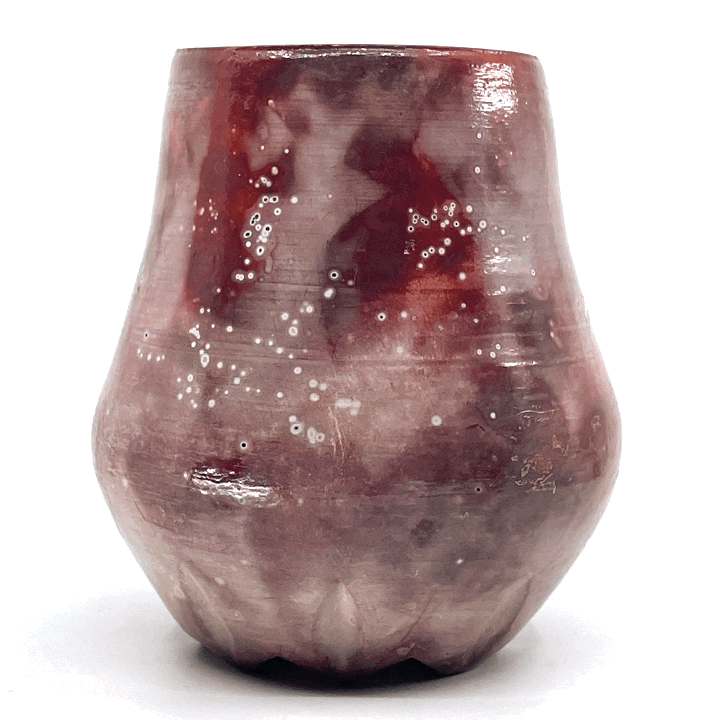 Image 1 of 4
Image 1 of 4

 Image 2 of 4
Image 2 of 4

 Image 3 of 4
Image 3 of 4

 Image 4 of 4
Image 4 of 4





Pilbara Vase
Many shades of red and pink interplay on this intriguing vase, which also has some white dot accents. There is no glaze on the piece; the colors were created by a coating of an iron solution which interacted with heat during the kiln firing. Pieces produced in this manner are usually still porous and won’t hold water, but this one has a coating of liquid quartz on the inside to make it waterproof. It also comes with a plastic frog which will hold flower stems in place.
Height: 5”
Top Diameter: 3-1/4”
Maximum Diameter: 4-3/4”
Bottom Diameter: 3”
Iron is one of the world’s most plentiful resources, making up about 5% of the earth’s crust. The largest accumulation of it is found in the Pilbara region of western Australia. Around the world, rainwater dissolves iron in soil, causing it to seep into groundwater. In small amounts, iron in drinking water is not hazardous and is actually beneficial. Essential for good health, iron helps transport oxygen in the blood. Most tap water in the United States supplies approximately 5 percent of the dietary requirement for iron. Larger concentrations of iron in water can create a reddish brown color and make the water taste metallic.
Many shades of red and pink interplay on this intriguing vase, which also has some white dot accents. There is no glaze on the piece; the colors were created by a coating of an iron solution which interacted with heat during the kiln firing. Pieces produced in this manner are usually still porous and won’t hold water, but this one has a coating of liquid quartz on the inside to make it waterproof. It also comes with a plastic frog which will hold flower stems in place.
Height: 5”
Top Diameter: 3-1/4”
Maximum Diameter: 4-3/4”
Bottom Diameter: 3”
Iron is one of the world’s most plentiful resources, making up about 5% of the earth’s crust. The largest accumulation of it is found in the Pilbara region of western Australia. Around the world, rainwater dissolves iron in soil, causing it to seep into groundwater. In small amounts, iron in drinking water is not hazardous and is actually beneficial. Essential for good health, iron helps transport oxygen in the blood. Most tap water in the United States supplies approximately 5 percent of the dietary requirement for iron. Larger concentrations of iron in water can create a reddish brown color and make the water taste metallic.
Many shades of red and pink interplay on this intriguing vase, which also has some white dot accents. There is no glaze on the piece; the colors were created by a coating of an iron solution which interacted with heat during the kiln firing. Pieces produced in this manner are usually still porous and won’t hold water, but this one has a coating of liquid quartz on the inside to make it waterproof. It also comes with a plastic frog which will hold flower stems in place.
Height: 5”
Top Diameter: 3-1/4”
Maximum Diameter: 4-3/4”
Bottom Diameter: 3”
Iron is one of the world’s most plentiful resources, making up about 5% of the earth’s crust. The largest accumulation of it is found in the Pilbara region of western Australia. Around the world, rainwater dissolves iron in soil, causing it to seep into groundwater. In small amounts, iron in drinking water is not hazardous and is actually beneficial. Essential for good health, iron helps transport oxygen in the blood. Most tap water in the United States supplies approximately 5 percent of the dietary requirement for iron. Larger concentrations of iron in water can create a reddish brown color and make the water taste metallic.
